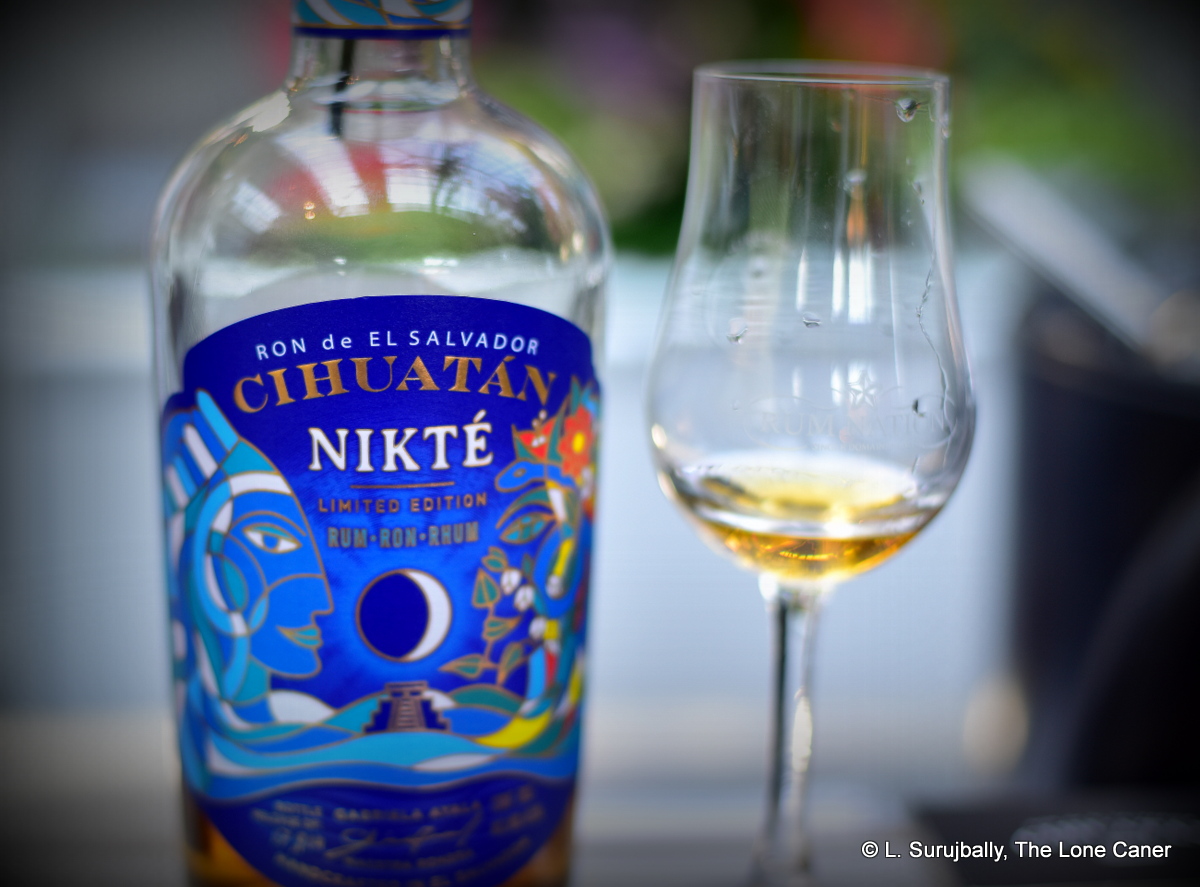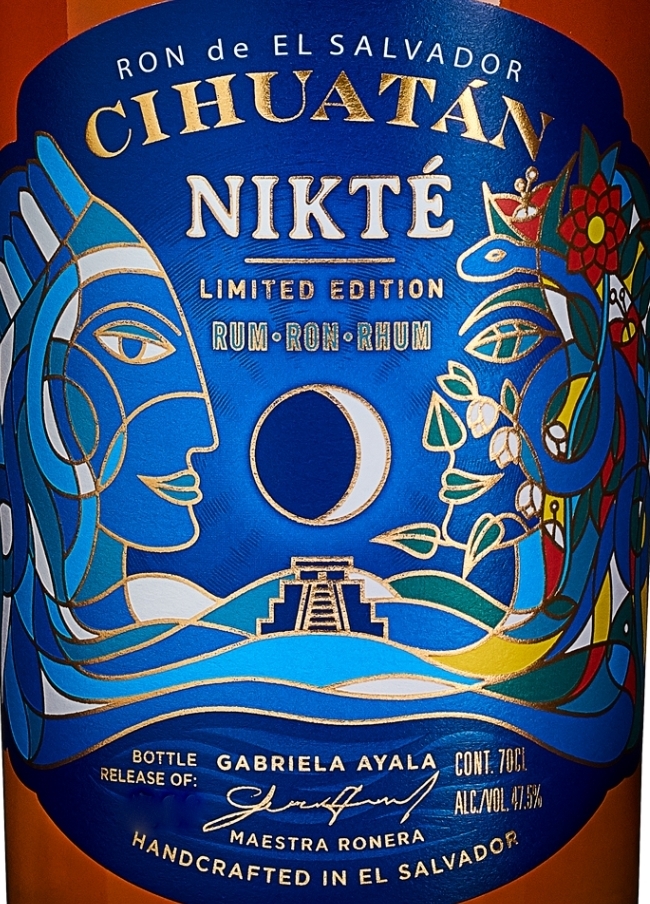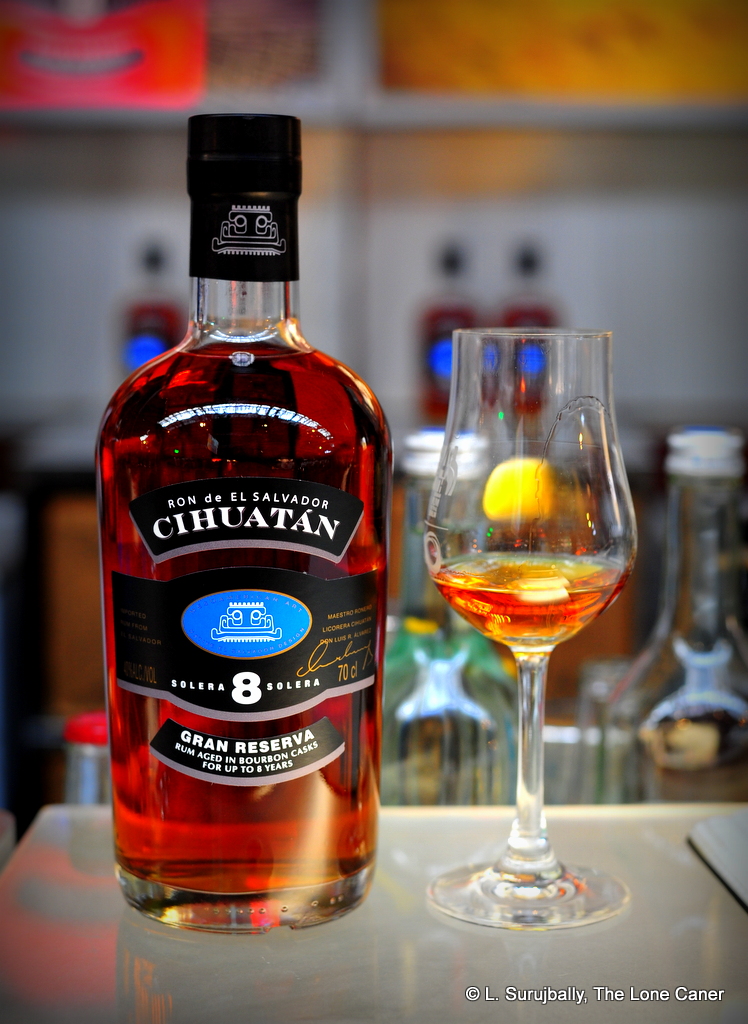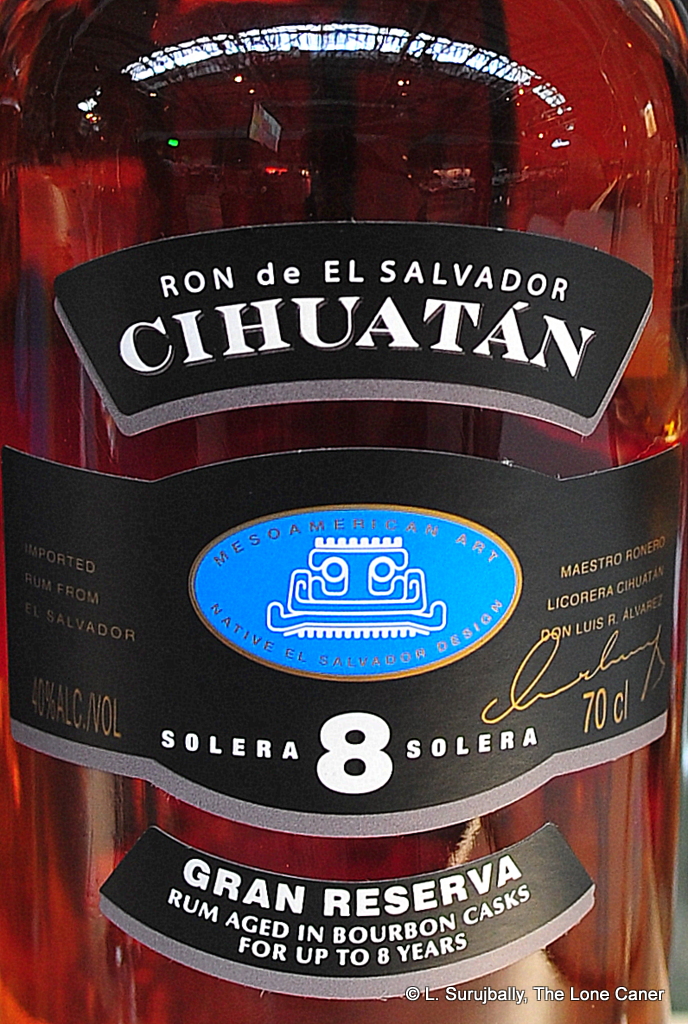
Three years ago I tried and later wrote a review of the 8-year-solera Cihuatán rum from El Salvador (bottled at 40%), and noted rather disappointedly that “this was a remarkably quiet rum.” Essentially, I regarded it with some indifference. At the time, Paul Senft of Rum Journey and I were trading notes and he told me they had a 12 year solera variation slated to be released, and Cihuatán themselves told me they were working on some more limited editions of their own.
Well, I moved on, liking but not completely won over by the brand at that point, and while I never did source the 12 year solera, I kept a weather eye open for anything they made that might pop up in years to come. Then in 2019, I caught wind of the special Nikté limited release — though one would perhaps be forgiven for asking what is so terribly limited about 17,914 bottles — and resolved to try it for a number of reasons. One, it was a follow-up to the 2017 review to satisfy my own curiosity; two, it was made by a maestra ronera, Gabriela Ayala, and that deserves respect and more than just a passing acknowledgement; three, it was issued at north of standard, stronger than the usual Latin rums I’ve tried in the past made by primary producers; and four, I just wanted to see if it really was special. Marketing works on impressionable young minds like mine.
 The name of the rum (or ron, if you will) relates back to the Mayan motif that has been part of the brand from the inception: Cihuatán comes from the name of an ancient Mayan settlement that once existed very close to where the distillery is currently located. It translates into “next to the woman”, referring to a mountain nearby which looks like a sleeping woman in silhouette. The original glyph on the label (Tlaloc, the Mayan god of water) has been replaced by the moon goddess (Ix Chel), and a feminine version of the flower known as Sac Nicté in Nahuat (“sac” means white) as her stylized floral twin, all in homage to Kay Nikté, the Mayan festival of flowers. And I have to concede, that’s one really pretty label, colourful and well laid out – if the intention was to get me to see it on a shelf and stop, stare and maybe buy it, yeah, they succeeded pretty well there.
The name of the rum (or ron, if you will) relates back to the Mayan motif that has been part of the brand from the inception: Cihuatán comes from the name of an ancient Mayan settlement that once existed very close to where the distillery is currently located. It translates into “next to the woman”, referring to a mountain nearby which looks like a sleeping woman in silhouette. The original glyph on the label (Tlaloc, the Mayan god of water) has been replaced by the moon goddess (Ix Chel), and a feminine version of the flower known as Sac Nicté in Nahuat (“sac” means white) as her stylized floral twin, all in homage to Kay Nikté, the Mayan festival of flowers. And I have to concede, that’s one really pretty label, colourful and well laid out – if the intention was to get me to see it on a shelf and stop, stare and maybe buy it, yeah, they succeeded pretty well there.
Based on its tasting, however, the case of unquestioning purchase is harder to make for those who have been part of the rum renaissance over the last ten years, and who prefer something more powerful and distinct (although not for those for whom it was made, perhaps). The ron is decidedly Spanish/Latin in style and influence and the strength — 47.5%, unusual for a rum from Central America — only marginally raised it in my estimation. Consider first the nose – it was quite sweet, with scents of marshmallows, caramel, vanilla, ice cream and flowers (really light jasmine), and the warmth and depth of a loaf of bread fresh from the oven. What it was, was soft, and easygoing – quite an achievement for a rum dialled-up as this was. I had expected something a bit fiercer, but no…
Anyway, the taste was firm, but the soft easiness did not go away and to some extent that lessened the experience for me. It presented little in the way of aggression and was like chomping down on a freshly laundered feather pillow – there were sweet floral notes (jasmine again), the crisp smell of laundry detergent, delicate spices – dill, nutmeg – some lemon zest, cumin, tempered and somewhat eclipsed by heavier flavours of butterscotch, toffee, bitter chocolate and caramel, ending with the soft exhaling sigh of a finish that didn’t give much more, mostly caramel, nutmeg, sweet delicate flowers and a touch of light white fruits.
Overall, this rum is a soft sipper’s dream, but won’t do much for a hogo-lover or wooden-still worshipper. I’ve been warned by many in the past not to decry rums made for palates different my own, so I’ll simply make note of the matter and leave you to make up your own mind. Personally, I think it’s better than the 8 year solera, and has more going on in its jock, but remains too soft and even too sweet and even the strength can’t entirely make up for that. Yet kudos have to be given for taking the brand in these directions to begin with – for anyone who likes the soporific, relaxed charms of the Spanish style rons, this is a step up the ladder that is a few orders more interesting, more complex and plain out better than its 8 year solera counterpart.
(#675)(80/100)
Other notes
- The Nikte is a blend of rums uniting 12 and 14 year old rums aged in ex-bourbon casks with a 15 year old rum aged in first-fill american oak barrels. Cihuatan confirmed later that all components were true aged, not solera, and later told Ivar de Laat of Rum Revelations that it was also a cane juice/molasses rum blend.
- Made by Licorera Cihuatan, a subsidiary of Ingenio La Cabaña, one of the larger sugar concerns in the country (established in around 1920). It is a diversified company located north of San Salvador, and its main business is based on a sugar cane plantation, a sugar mill and a modern alcohol plant (built in 1999) with a multi-column still that produces various alcohols and liqueurs for both the leisure and industrial market. Sometime in the early 2000s the company initiated their own brand, consulting with Luis Ayala (publisher of Got Rum? magazine) in the process. They began releasing the Cihuatán brand in 2015 and have added to its brand portfolio ever since. There are currently five rums in the portfolio, two stated soleras (8 and 12), an aged rum “Obsidian” and two special editions, the Nikte and the Nahual which are aged blends.

